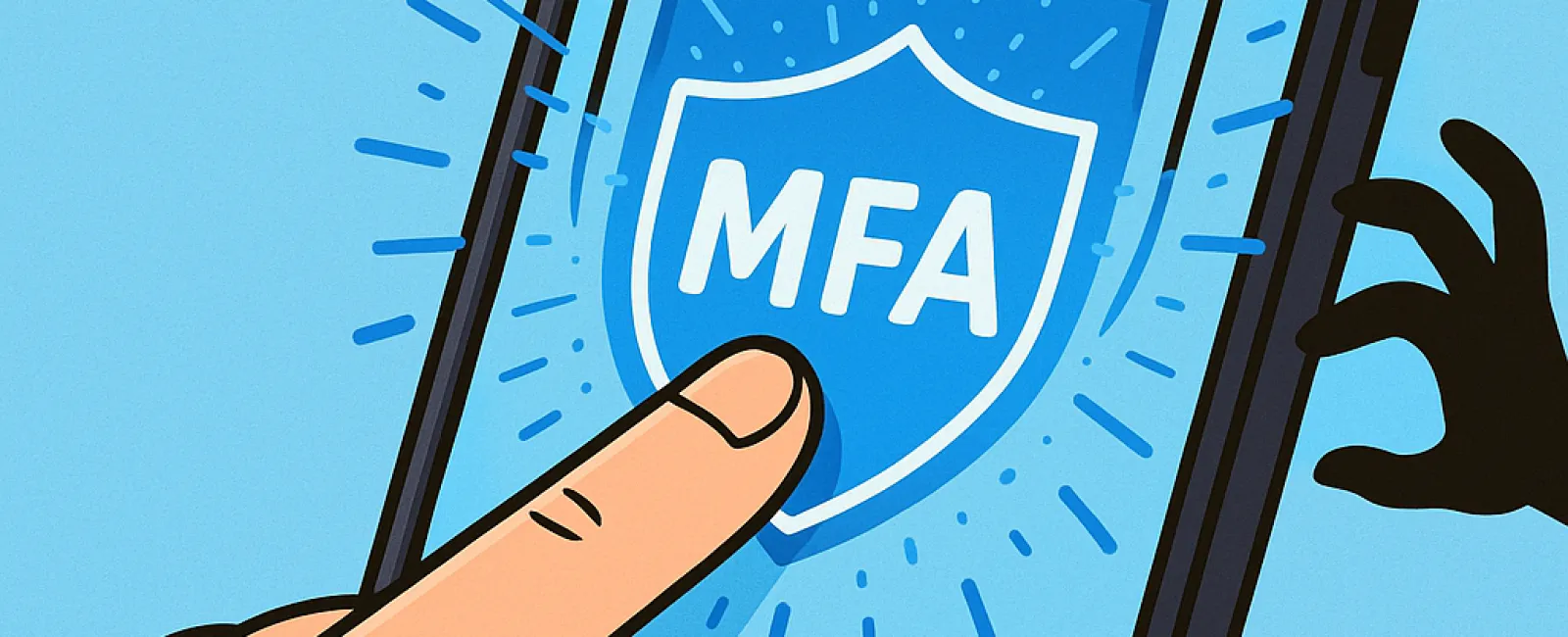October 27, 2025
Just like you wouldn't drive without buckling your seatbelt or leave your office unsecured, you shouldn't navigate the web without multifactor authentication (MFA). Why settle for one line of defense when protecting your digital life?
MFA acts as a powerful extra barrier for your online accounts. Rather than relying solely on a password—which can be compromised through theft, guessing, or phishing—it adds a vital second checkpoint. Whether it's a verification code sent via text, an authentication app prompt, or a fingerprint scan, MFA ensures that if a hacker finds your password, they still can't break in without this critical second piece.
One Simple Step, Huge Impact
Think of your password as locking the door and MFA as activating the alarm system before bedtime. While locking the door may seem sufficient, wouldn't you prefer the added assurance that comes with multiple security layers? That's exactly the peace of mind MFA delivers.
MFA introduces a quick extra step to verify your identity, confirming it's really you trying to gain access. This process goes by many names—two-step verification, two-factor authentication, one-time password—but they all mean the same: requiring two or more verification steps to protect sensitive information.
MFA methods vary widely, including confirmation emails during account setup, bank security questions, text messages, push notifications, and phone calls. Most options take only a simple tap or code entry to complete.
How MFA Protects You in Real Situations
While using MFA is fast and convenient for you—just a tap or code entry—it creates a nearly insurmountable obstacle for cybercriminals. If an unauthorized login attempt happens, MFA sends you a notification or requires a code, alerting you to suspicious activity. This early warning empowers you to change your password quickly, preventing data theft. This extra step halts hackers in their tracks even if they trick someone into sharing a password.
According to Microsoft's study, enabling MFA reduces the risk of account breaches by over 99.2%, reaching an impressive 99.99% protection level when enabled properly.
Where to Activate MFA for Maximum Security
Ensure MFA is enabled in your most critical digital areas, including:
- Banking and financial applications
- Email and cloud storage services
- Social media platforms
- Work-related accounts containing sensitive client or company data
Most popular platforms offer built-in MFA options—simply enable whichever method best fits your routine. Utilizing an authenticator app can significantly tighten security, especially for workforce access.
In summary, MFA is a fast, cost-free way to block the vast majority of hacking attempts. Investing a few minutes to implement MFA today can save you from extensive damage control and data loss tomorrow.
The easiest way to set up MFA is to contact your IT provider. A knowledgeable MSP will make the process even smoother. If you're in need of a cybersecurity expert, click here or give us a call at 332-217-0601 to Speak to an Expert now.



